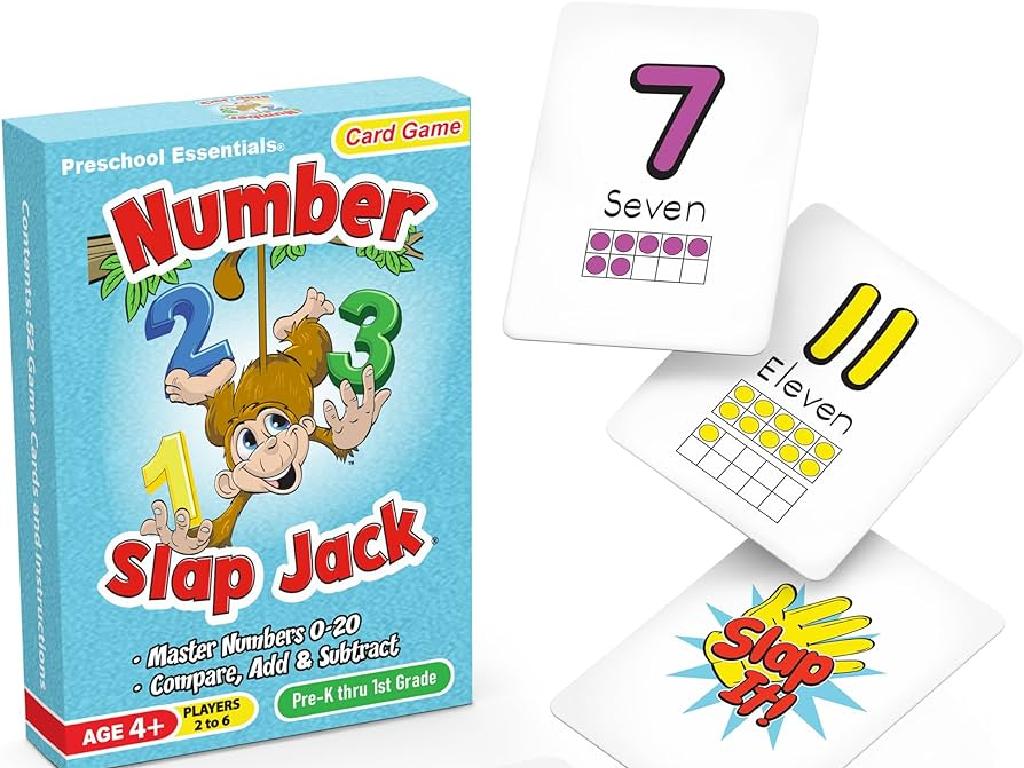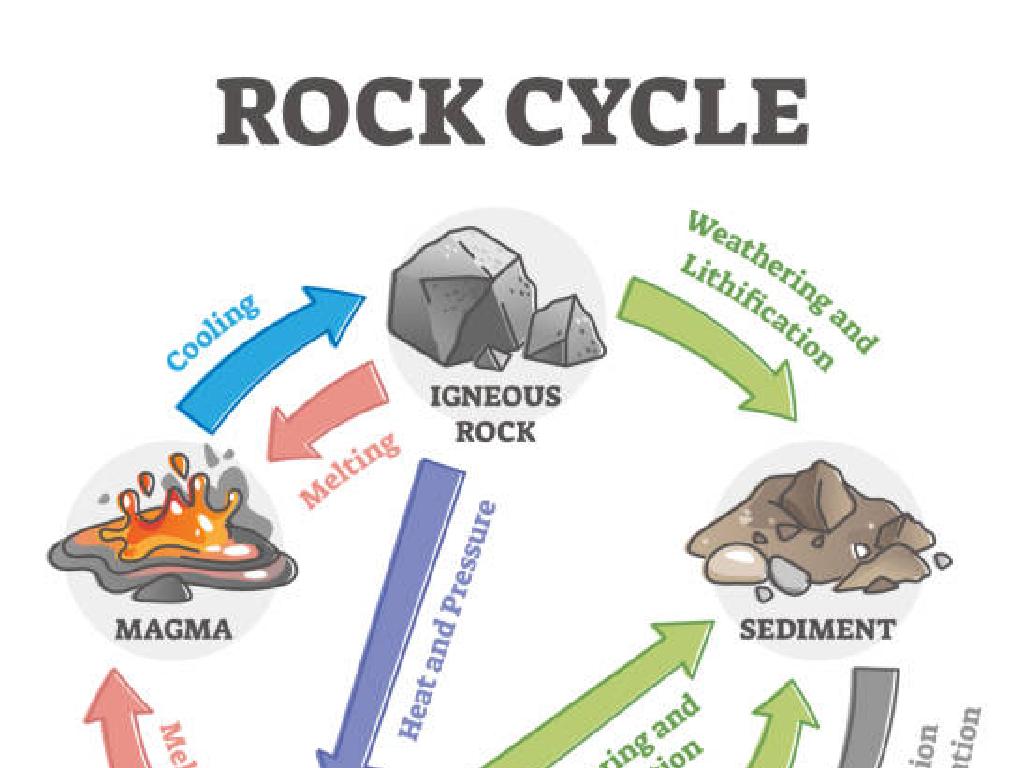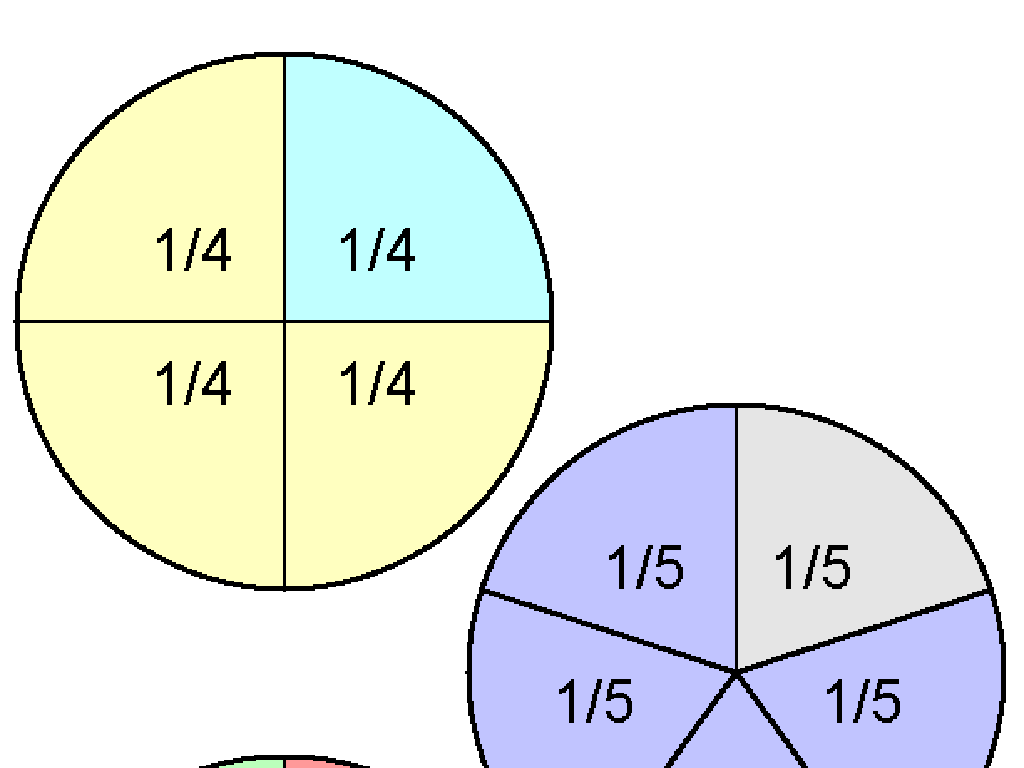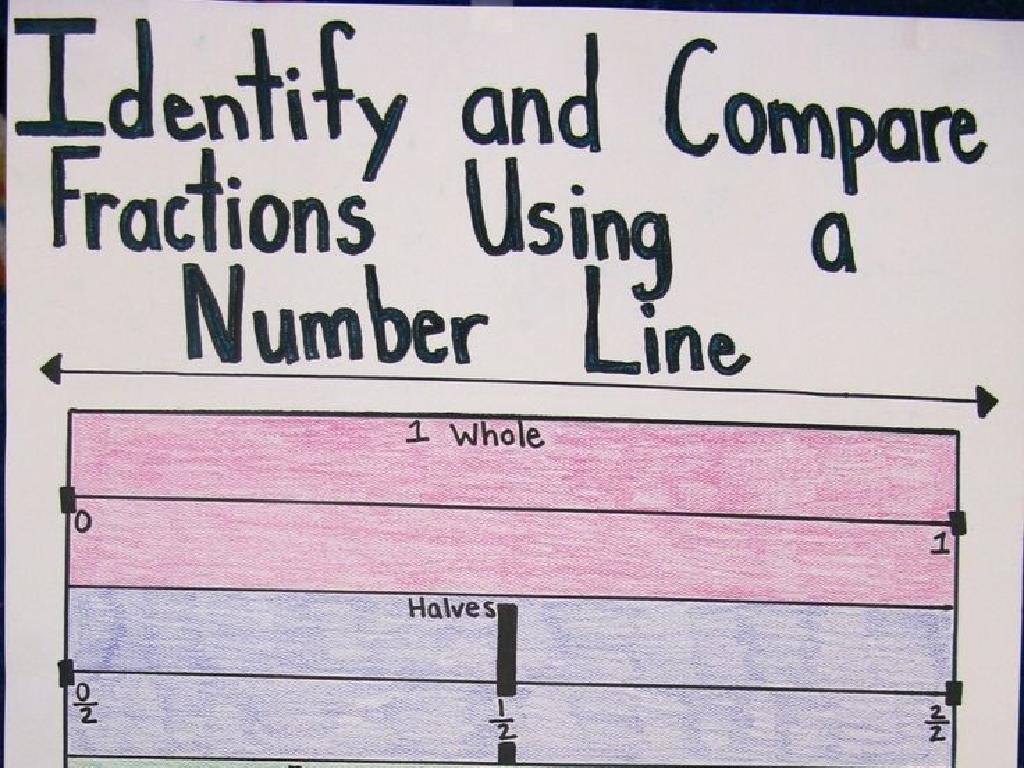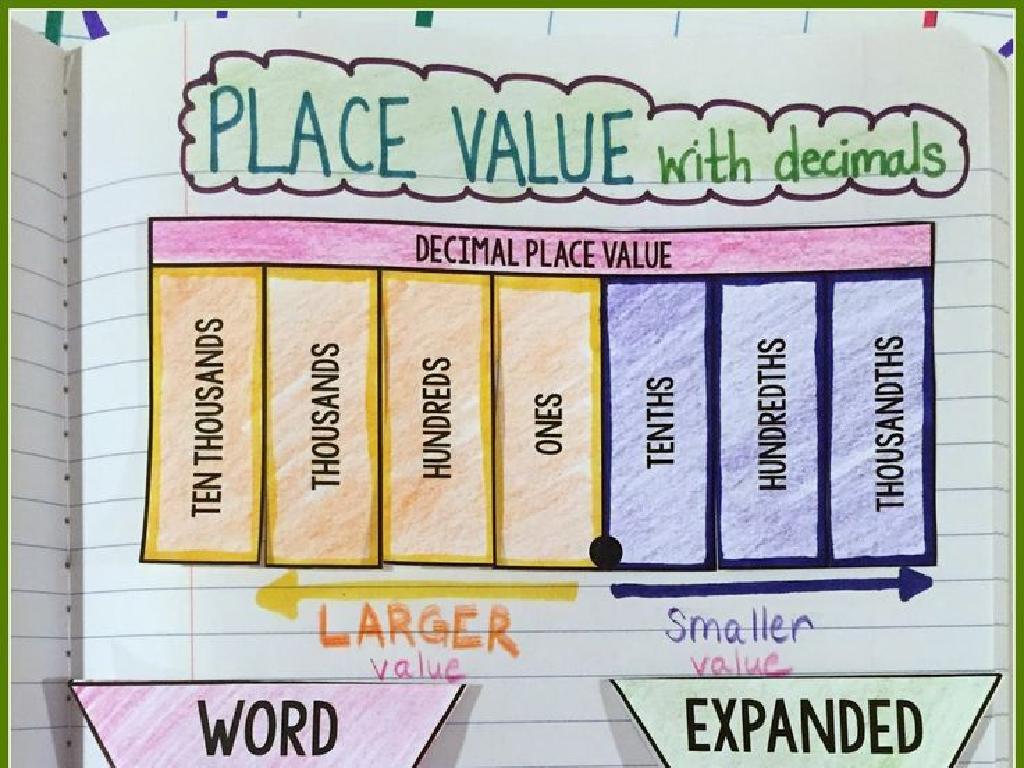Identify Main Verbs And Helping Verbs
Subject: Language arts
Grade: Third grade
Topic: Verb Types
Please LOG IN to download the presentation. Access is available to registered users only.
View More Content
Today’s Adventure: Main Verbs and Helping Verbs!
– Discover main verbs in sentences
– Main verbs show the action. Like ‘run’, ‘jump’, ‘eat’.
– Explore helping verbs
– Helping verbs work with main verbs. Examples: ‘is’, ‘are’, ‘was’.
– Verbs bring sentences to life
– Without verbs, sentences would be boring! They make it fun.
– Practice finding verbs
|
This slide introduces the concept of main verbs and helping verbs to third-grade students. Begin by explaining that verbs are action words that tell us what is happening in a sentence. Main verbs stand alone and show the primary action, while helping verbs assist the main verb to clarify the action. Use examples like ‘She is running’ or ‘He was eating’ to illustrate how helping verbs modify the main verb. Engage the class with interactive activities where they identify verbs in sentences from their favorite stories or create sentences of their own. This will help them understand the importance of verbs in making sentences exciting and meaningful.
Exploring Verbs: Action Words!
– Verbs show action or state
– They tell what the subject does
– Examples: ‘run’, ‘think’, ‘play’
– ‘I run fast’, ‘We think deeply’, ‘They play games’
– Main verbs vs. helping verbs
– ‘is running’, ‘has thought’, ‘will play’
|
Begin by explaining that verbs are the heart of a sentence, showing actions like ‘run’ or states of being like ‘is’. Emphasize that the verb tells us what the subject of the sentence is doing or how they are. Provide clear examples of simple verbs in action. Then, introduce the concept of main verbs and helping verbs. Main verbs stand alone in showing the action, while helping verbs work with main verbs to show time or possibility. Use examples like ‘is running’ to show a helping verb (is) with a main verb (running). This slide sets the foundation for understanding how verbs function within sentences.
Meet the Main Verb
– Main verbs lead the sentence
– They show action or state
– Examples: ‘jump’, ‘is’, ‘write’
– ‘Jump’ shows action, ‘is’ shows a state of being
– Spot the boss of our sentences
– Find the main verb in ‘She sings beautifully’
|
This slide introduces the concept of main verbs to third-grade students. Main verbs are crucial in a sentence as they tell us what action is being done or the state of being of the subject. Use examples like ‘jump’ for action and ‘is’ for a state of being to illustrate the point. Encourage students to identify the main verbs in sentences. For instance, in the sentence ‘She sings beautifully,’ ‘sings’ is the main verb because it’s the action the subject is doing. Have students practice by finding the main verbs in various sentences and explaining the action or state they represent.
Helping Verbs: The Sidekicks of Sentences
– Helping verbs team up with main verbs
– Just like superheroes have sidekicks, main verbs often have helpers!
– They express time or possibility
– Words like ‘can’ show ability, while ‘will’ talks about the future
– Common examples: can, have, will
– ‘Can’ shows ability, ‘have’ shows possession, ‘will’ indicates future action
– Let’s find helping verbs in sentences
|
This slide introduces the concept of helping verbs to third-grade students. Helping verbs are like the sidekicks to main verbs; they assist the main verb in a sentence by extending its meaning and providing additional context such as time or possibility. Examples of helping verbs include ‘can,’ which expresses ability, ‘have,’ which indicates possession or completion, and ‘will,’ which is used for future actions. Encourage students to identify helping verbs in sentences and understand their role in adding detail to the actions described by the main verbs. Use simple sentences to illustrate how helping verbs modify the main verb’s meaning.
Main Verbs & Helping Verbs Together
– Helping verbs team up with main verbs
– They add detail to the action
– Example: ‘She can swim fast’
– ‘can’ is the helping verb showing ability
– ‘can’ helps, ‘swim’ is the main verb
– Main verb ‘swim’ is the action she can do
|
This slide introduces the concept of main verbs and helping verbs working together to provide more detail in a sentence. Emphasize that the main verb is the primary action or state of being, while the helping verb assists by adding context such as time, possibility, or obligation. Use the example ‘She can swim fast’ to illustrate how ‘can’ (helping verb) adds the idea of ability to the main verb ‘swim.’ Encourage students to come up with their own sentences using different helping verbs with main verbs to reinforce the concept. Activities can include identifying the verbs in sentences, creating sentences with given verbs, and swapping helping verbs to see how the meaning changes.
Let’s Find the Verbs!
– Main verbs show action or state
– Main verb: what is being done?
– Helping verbs ‘help’ main verbs
– Examples: ‘is’, ‘has’, ‘do’, ‘can’
– Practice with a sentence
– Find verbs in the example
– ‘He has finished his homework’
– Main verb: ‘finished’, Helping verb: ‘has’
|
This slide is aimed at helping third-grade students understand the concept of main verbs and helping verbs. Main verbs are the words in a sentence that show the action or state of being. Helping verbs, also known as auxiliary verbs, accompany the main verb to give it more meaning and to indicate tense. Use the sentence ‘He has finished his homework.’ to illustrate this concept. ‘Finished’ is the main verb showing the action, and ‘has’ is the helping verb that helps to express the perfect tense. Encourage students to identify the verbs in the sentence and explain why ‘has’ is the helping verb. Provide additional examples if time allows and ensure that students practice this skill to reinforce their understanding.
Your Turn: Verb Detectives
– Become a verb detective!
– Find main and helping verbs
– Main verbs show action; helping verbs work with main verbs
– Pair up for a verb hunt
– Work with a partner to spot verbs in sentences
– Share your findings with the class
– Discuss what verbs you found and how you found them
|
In this activity, students will pair up and act as ‘verb detectives’ to identify main and helping verbs in given sentences. Main verbs are the action words in a sentence, while helping verbs assist the main verb and can change the tense or meaning of the main verb. Provide students with sentences that contain clear examples of main and helping verbs. Encourage them to underline or highlight the verbs they find. After the activity, ask pairs to share their sentences and identified verbs with the class, discussing how they determined which words were the main and helping verbs. This will help reinforce their understanding of verb types and how they function within a sentence. Possible sentences for the activity could include: ‘She is running quickly,’ ‘He has finished his homework,’ or ‘They will be going to the zoo.’
Class Activity: Verb Charades
– Act out actions for guessing
– Use helping verbs in charades
– Words like ‘am’, ‘is’, or ‘are’ set up the action
– Example: ‘I am hopping’
– Mimic hopping to show the verb without speaking
– Classmates guess the main verb
|
This interactive activity is designed to help students understand the concept of main verbs and helping verbs through a game of charades. Students will take turns acting out different actions while using helping verbs to describe their charades without speaking. For example, a student might act out ‘hopping’ while thinking ‘I am hopping’ to themselves. Classmates will guess the action, identifying the main verb. This activity encourages active participation and reinforces the lesson on verbs in a fun, memorable way. Prepare a list of actions and corresponding helping verbs for students to use, ensure everyone gets a turn, and guide them to use helping verbs correctly.
Conclusion & Homework: Verbs in Action!
– Celebrate learning about verbs
– Verbs bring power to sentences
– Homework: Craft 5 sentences
– Create sentences with both verb types
– Use a main verb and a helping verb
– Example: ‘She can dance gracefully.’ (‘can’ is helping, ‘dance’ is main)
|
Well done on today’s lesson about main verbs and helping verbs! Verbs are the action words in our sentences and they are very important. They help us to express what we want to say clearly and with energy. For homework, I want you to write five sentences. Each sentence should have a main verb and a helping verb. This will help you understand how they work together to make sentences more interesting. Remember, a helping verb helps the main verb show action. It can also show a possibility, like ‘can’ or ‘might’. Have fun with your sentences and try to use different verbs that you learned today!

